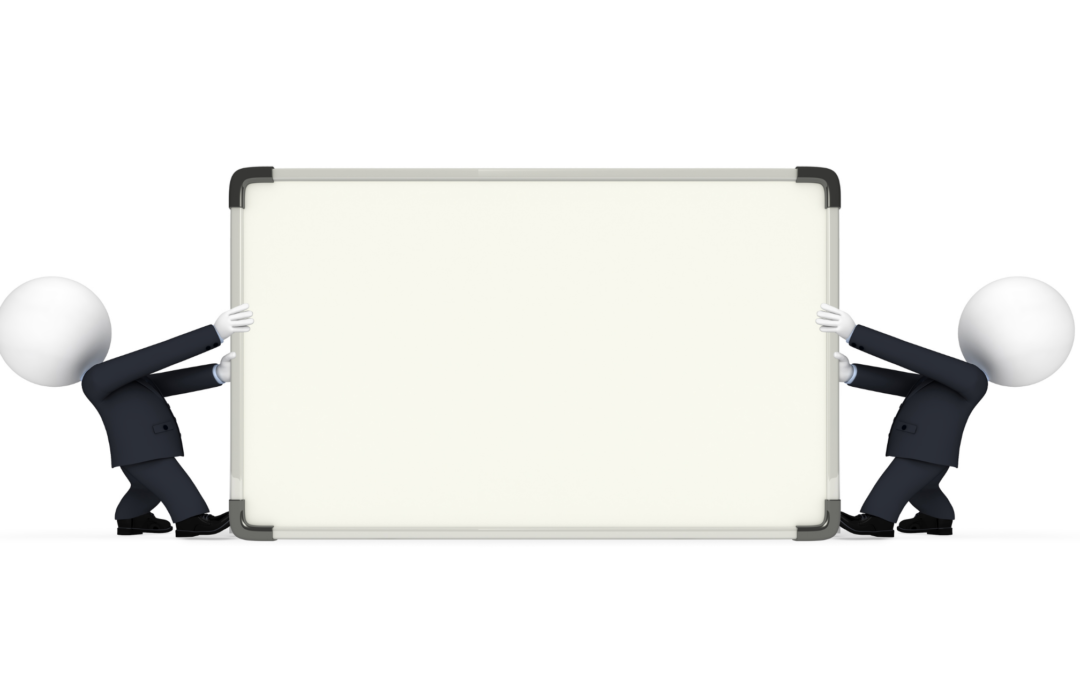Part 3: How You Meet Makes a Difference
There are many considerations when planning your board orientation. What must you include, what else can you add that’s impactful, and – how are you planning to meet? For many organizations, this last question has dramatically changed in the last few years. For others with a more global footprint, the options for video conferencing have expanded and made meeting easier than it ever has been before.
No matter how you meet, there are a few things to keep in mind to make it a welcoming environment that encourages interaction between board members.
In-person meetings have an energy that is hard to replicate in any other format. This energy can enhance your meeting, but can also contribute to side-conversations or other distractions which split the focus of your board, ultimately undermining the impact of the orientation meeting itself. I encourage you to consider the individuals and relationships in the room and use table tents to assign spots. Table tents can help in many ways: They ease the uncertainty for new members who might not know who everyone else is in the room. Further, by assigning seats and by strategically choosing the order your board members sit around the table, you can encourage conversations that include the full board vs. side conversations. I also encourage an open U or full square table configuration for the room vs. a conference table where the sides are long but narrow. These open setup options allow for your board members to make eye contact with more people easily – which aids in conversation.
A fully virtual meeting removes the table setup, table tents and many (though not all) of the side conversations. However, you also are more directly competing with computer or phone notifications that attendees see popping up on their screen while in the meeting. Consider asking your board members to prepare to be on-camera for the full call and to minimize or fully close out of other programs and documents during the meeting. More than an in-person meeting, I encourage you to have a guiding PowerPoint or other document to share on the screen to help attendees focus. This helps keep the conversation supported and on topic, but also helps many meeting participants relax who may otherwise feel self-conscious being on camera for a prolonged period of time with people they may or may not know very well.
Perhaps the most complicated format for a meeting is a hybrid with people attending, both in-person and joining online. Here you must try to bridge the energy from in-person with the visual structure of virtual. Key considerations include making sure all in-person attendees are visible on the camera feed and able to be equally heard (volume and clarity), and also checking that the visual support seen by your online participants is also seen by those in-person. It’s even more important in a hybrid meeting to encourage conversations to include the full participants of the meeting vs. side conversations. These can muddle the audio being streamed out and make the meeting harder for the remote participants to follow. Additionally, if space allows, I encourage you to have table tents set up in the room for all remote participants.
Oftentimes, it’s easy for in-person participants to overlook remote participants in conversations without the in-person visual cues being presented by those physically present. Table tents help bridge that visual reminder cue. I also encourage you to often pause and check in with the remote participants during discussions to give them the auditory space to jump into the conversation, even going as far as to purposefully ask them for questions or input on discussion items so they aren’t forgotten. Remote participation for a hybrid meeting requires more mental focus to follow the speed and overlapping dialogue.
It’s important to remember that a highly successful orientation is about the content, discussion and accessibility for your board. What works best for one board may not work well for another – and what works best one year may not be the best option another year. Keep the need for clear communication avenues in mind and you can be successful no matter how the logistics of your meeting are being formatted.
You’re now well-equipped to plan and run a strong board orientation, but your board members aren’t the only stakeholders doing the work of your association. Who else might benefit from an orientation? Check back for the final part in this series as we tackle this question.
To read the other parts of this series, visit the Acumen blog for part 1 and part 2
